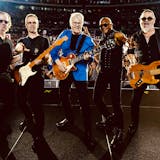Valencia Hardy dropped out of 11th grade after having a baby a few years ago, and her life swerved between taking care of her child and starting a career.
She eventually graduated from an alternative high school and trained in health care assisting for a time. Early this year, she started the 20-week construction class at Summit Academy OIC in Minneapolis, which included a chance to build cabins near Ely. "It opened your eyes to the real world," she said.
Last week, Hardy, now 22, started her first real-world job with Doug Speedling Builders of Hastings, joining the crew in a shop in St. Paul where carpenters build wall panels. "She's helping us out quite a bit," said Patrick Duffy, her supervisor. "She fit in real well."
In today's roaring economy, people who have long been on the margins of the American labor force — immigrants, teenagers, former prisoners, high school dropouts — are getting jobs at rates unseen in a generation or more. And employers are going to new lengths to hire them.
These workers are benefiting from the nine-year-old economic expansion and two massive demographic changes: the retirement of baby boomers and a leveling off of women entering the job market. And as more people seek jobs, they encourage friends and relatives to do the same.
For some, today's opportunities represent a start to overcoming poverty, troubled pasts and other challenges. They are hardly the end, however. Many jobs are still low-paying, with few benefits and little security. Others require workers to accept irregular schedules.
Even so, training programs at places like Summit Academy are full these days. Employers flock to them to find job candidates. Some are funding new training programs within them. Fairview Health Systems, for instance, is developing an eight-month course at the Cedar Riverside Opportunity Center in Minneapolis for operating room technicians, a job that will pay a living wage.
Richard Tsong-Taatarii - Star Tribune
Summit Academy, where Kalo Washington is studying IT, is currently full, and employers are flocking there to find much-needed job candidates.



